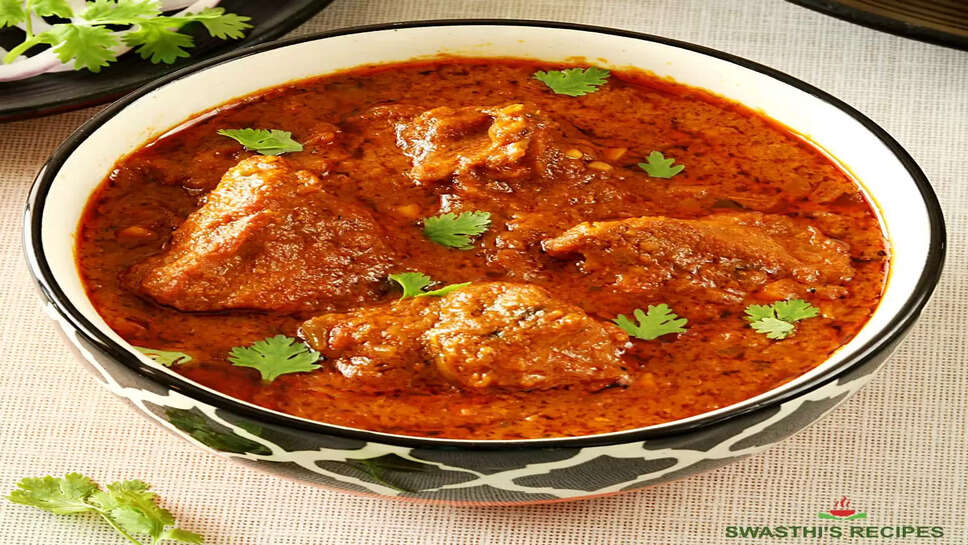Inside Kashmiri Cuisine: Subtle Spices, Sublime Gravies, and Centuries of Tradition

Nestled in the snow-kissed valleys and pine-covered hills of India’s northernmost state, Kashmir’s cuisine is a treasure trove of flavors, history, and culture. While much of India’s diverse culinary map has earned widespread recognition—from Punjabi butter chicken to South Indian dosas—Kashmiri cuisine remains a quietly majestic secret, waiting to be discovered beyond the borders of the valley.
Characterized by its liberal use of spices like fennel, dried ginger (sonth), saffron, and Kashmiri red chillies, as well as indigenous ingredients like lotus stem (nadru) and radish (mooji), the cuisine is both fragrant and fiery, rich yet balanced. But its true soul lies in slow-cooked meat gravies, elaborate feasts, and the deeply ingrained hospitality that surrounds every meal.
This is not just food—it’s poetry served on a plate.
A Cuisine Born of Geography, Trade, and Spirituality
Kashmiri food, as it exists today, is the product of centuries of cultural mingling. Influenced by Central Asian, Persian, and North Indian cuisines, it has developed into a style that is uniquely its own.
The climate of the region plays a critical role in shaping the local diet. Long, harsh winters have historically meant preserving vegetables through drying (hokh syun) and favoring high-protein meals, particularly those based on mutton and lamb, to sustain warmth and energy.
Spices like fennel and dry ginger—known for their warming properties—feature prominently, not just for flavor but for their medicinal qualities.
Wazwan: The Soul of Kashmiri Food Culture
At the heart of Kashmiri cuisine is the legendary Wazwan—a lavish, multi-course meal that showcases the artistry and discipline of Kashmiri cooking. Prepared by traditional chefs known as wazas, this ceremonial feast can include up to 36 courses, the majority of them made with meat, especially mutton.
Signature Wazwan dishes include:
-
Rogan Josh: A fiery red lamb curry made with Kashmiri chillies and yogurt.
-
Yakhni: A delicate mutton dish cooked in a fennel- and ginger-flavored yogurt gravy.
-
Gushtaba: Finely minced mutton meatballs simmered in a creamy yogurt sauce.
-
Rista: Spongy, soft mutton meatballs in a spicy red gravy.
The preparation of Wazwan is not just cooking—it’s ritual, respect, and pride passed down generations.
Meals are traditionally served in a shared platter called a “trami”, with four people dining together, reinforcing the spirit of community and connection.
Vegetarian Wonders: Beyond the Meat
Though Kashmir is often celebrated for its mutton dishes, its vegetarian offerings are equally captivating. The valley boasts a rich tradition of cooking vegetables like lotus stem (nadru), spinach (haakh), turnips, and dried gourds, often flavored with just a few spices to let the natural ingredients shine.
-
Nadru Yakhni: Lotus stems in a fennel- and yogurt-based gravy.
-
Dum Aloo: Potatoes simmered in a rich, thick gravy, deeply infused with cloves, cinnamon, and Kashmiri chilli.
-
Haakh: A simple yet comforting collard green preparation with minimal seasoning—an everyday staple.
The drying of vegetables in winter, when fresh produce is unavailable, leads to dishes made with dried tomatoes, aubergines, and turnips, rehydrated and slow-cooked to intensify their earthy flavor.
The Quiet Magic of Spices
Kashmiri cuisine doesn’t rely on fiery heat, despite its red appearance. Its brilliance lies in the harmonious layering of spices, which lend it depth without overwhelming the palate.
Some hallmark spices and ingredients include:
-
Fennel (saunf): Adds sweet, licorice-like notes to gravies.
-
Dry ginger (sonth): Offers warm, woody undertones, balancing yogurt-based dishes.
-
Asafoetida (hing): Used in vegetarian dishes for its umami kick.
-
Kashmiri red chilli: Mild in heat but vibrant in color, it’s the backbone of gravies like Rogan Josh.
-
Saffron (kong): Grown in the Pampore region, it’s a prized flavoring in both savory and sweet dishes.
These ingredients are not simply culinary choices—they reflect Ayurvedic principles, aiming to balance the body’s doshas and sustain health during Kashmir’s long winters.
Sweet Notes and Comforting Ends
While not known for elaborate desserts, Kashmiri cuisine has a few gems:
-
Phirni: A rice flour pudding, delicately flavored with saffron and cardamom.
-
Shufta: A royal dry fruit and paneer dish, often served warm with honey and ghee.
But perhaps the most defining post-meal experience is Kashmiri Kahwa—a green tea infused with saffron, cinnamon, cardamom, and crushed almonds, served in a samovar. It is a warming, aromatic drink that is as ceremonial as it is refreshing.
Cultural and Religious Significance
Food in Kashmir isn’t just sustenance; it’s a marker of identity and tradition. Muslim, Pandit, and Buddhist communities have their own variations of dishes and festivals, yet many recipes transcend religious boundaries.
For instance, Nadru and Haakh are cooked across communities, with minor changes in technique or ingredients, but with the same reverence.
Special meals are prepared for festivals like Eid, Shivratri, and Navreh, each showcasing unique family recipes passed down through generations. Kashmiri Pandit cuisine, for example, avoids onions and garlic, but still features rich gravies and complex flavors.
Why It Remains Underrated
Despite its sophistication, Kashmiri cuisine remains largely underrepresented in India’s mainstream food scene. Unlike Punjabi or South Indian restaurants, Kashmiri eateries are rare, especially outside North India. Several reasons contribute:
-
Complex preparation: The dishes often require hours of cooking and a mastery of slow techniques.
-
Limited access to authentic ingredients, like Kashmiri saffron and dry ginger.
-
Lack of commercial marketing compared to other Indian cuisines.
Yet, for those who taste it, Kashmiri cuisine leaves an indelible impression—comforting yet regal, subtle yet bold, and always soulful.
A Culinary Legacy Worth Celebrating
As India embraces regional cuisines more consciously, there’s growing interest in reviving and preserving Kashmiri food traditions. Home chefs, food bloggers, and culinary historians are documenting heirloom recipes, while high-end restaurants are beginning to experiment with Wazwan-inspired tasting menus.
For travelers visiting the valley, a meal with a local family, or a traditional Wazwan at a Kashmiri wedding, is a life-changing culinary experience—one that connects the eater to stories of survival, celebration, and sublime craftsmanship.
More Than Just Food
Kashmiri cuisine is not just a collection of recipes—it is a living expression of the valley’s heritage, resilience, and artistry. From the earthy crunch of lotus stem to the velvet softness of Gushtaba, from the warmth of haakh to the golden fragrance of saffron-laced Kahwa, every dish tells a story—of mountains, memory, and meticulous tradition.
In an era of fusion food and fast meals, Kashmir quietly reminds us that the best things take time—and they’re always worth the wait.
